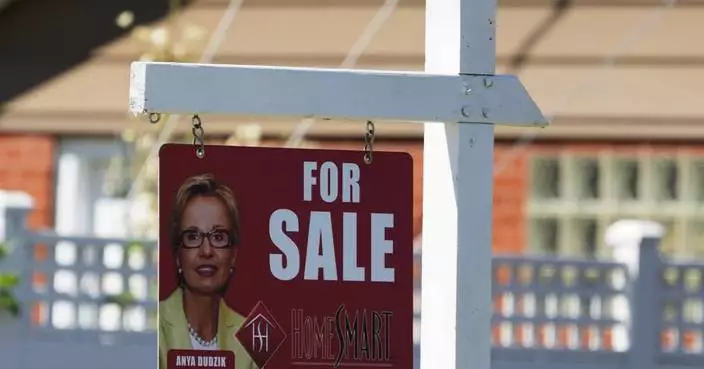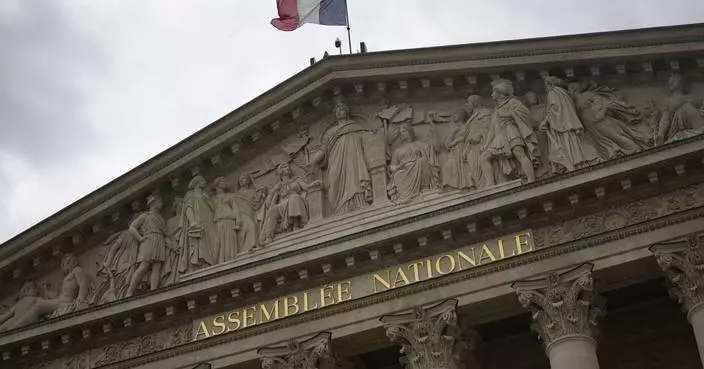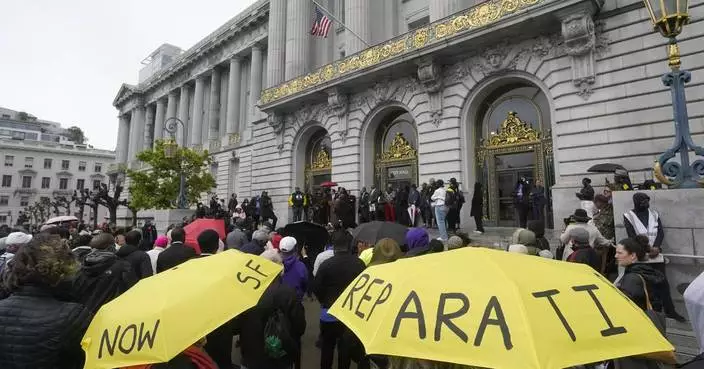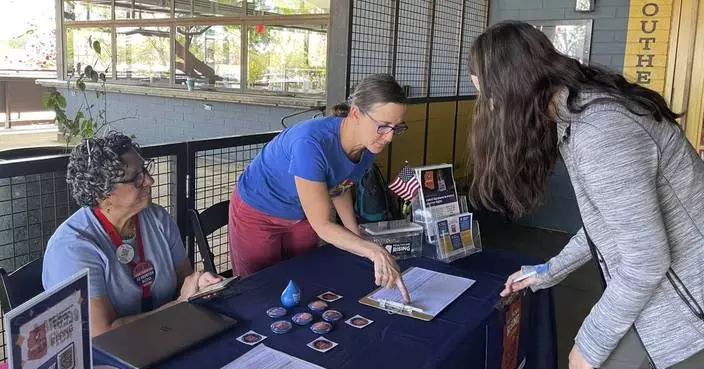LAKE CHARLES, La. (AP) — The Biden administration can’t delay consideration of projects aimed at exporting liquefied natural gas while a legal challenge by 16 Republican-led states plays out in federal court, a Louisiana judge said Monday.
U.S. District Judge James Cain, Jr. sided with the states, granting a preliminary injunction that puts the Biden administration’s delay on hold.
It was unlikely, however, that any of the projects would be on a fast track for consideration as the U.S. Department of Energy said late Monday that it disagreed with the court's ruling and was evaluating its next steps. The White House also voiced disappointment.
“We remain committed to informing our decisions with the best available economic and environmental analysis, underpinned by sound science,” White House spokesperson Angelo Fernández Hernández said in an email to The Associated Press.
President Joe Biden in January decided his administration would delay consideration of new natural gas export terminals in the United States, even as gas shipments to Europe and Asia soared following Russia’s invasion of Ukraine. The move aligned the Democrat with environmentalists who fear an increase in exports — in the form of liquefied natural gas, or LNG — is locking in potentially catastrophic planet-warming emissions.
A coalition of states including Louisiana, Alaska, Texas, West Virginia and Wyoming sued in March, claiming that the administration was violating the U.S. Constitution and other federal laws by banning exportation of LNG to countries without a free trade agreement.
In temporarily blocking the Biden ban on new approvals, Cain said the states will likely succeed in their case. He cited evidence submitted by the plaintiffs that showed loss of revenues and deferred investments in LNG projects due to the Biden administration's actions.
The ruling comes just days after a federal commission approved what would be the nation’s largest export terminal for liquefied natural gas. Venture Global’s Calcasieu Pass 2 southwestern Louisiana project, often referred to as CP2, was approved last week with little discussion by the Federal Energy Regulatory Commission.
That project still needs DOE approval. The agency has said the project’s application was pending.
Republican members of Congress from Louisiana to Alaska have derided the administration's pause as shortsighted and a boon to foreign adversaries that produce energy, including Iran and Russia. Other supporters have argued that projects such as CP2 will be critical to global energy security.
The environmental group Evergreen Action was among those to criticize Cain's ruling, alleging that the judge was “bending the law to hand the oil industry a win.”
“Pause or no pause, the science is clear: No sound analysis that accounts for the climate and environmental hard inflicted by LNG exports could possibly determine that these deadly facilities are in the public interest,” Craig Segall, the group's vice president, said.
According to the DOE, current authorizations for exports of LNG to non-free trade agreement countries stand at over 48 billion cubic feet per day, or more than 45% of our current domestic production of natural gas. The agency also said the U.S. will continue to be the largest exporter of LNG by a substantial margin for at least the next six years based on the current export capacity.
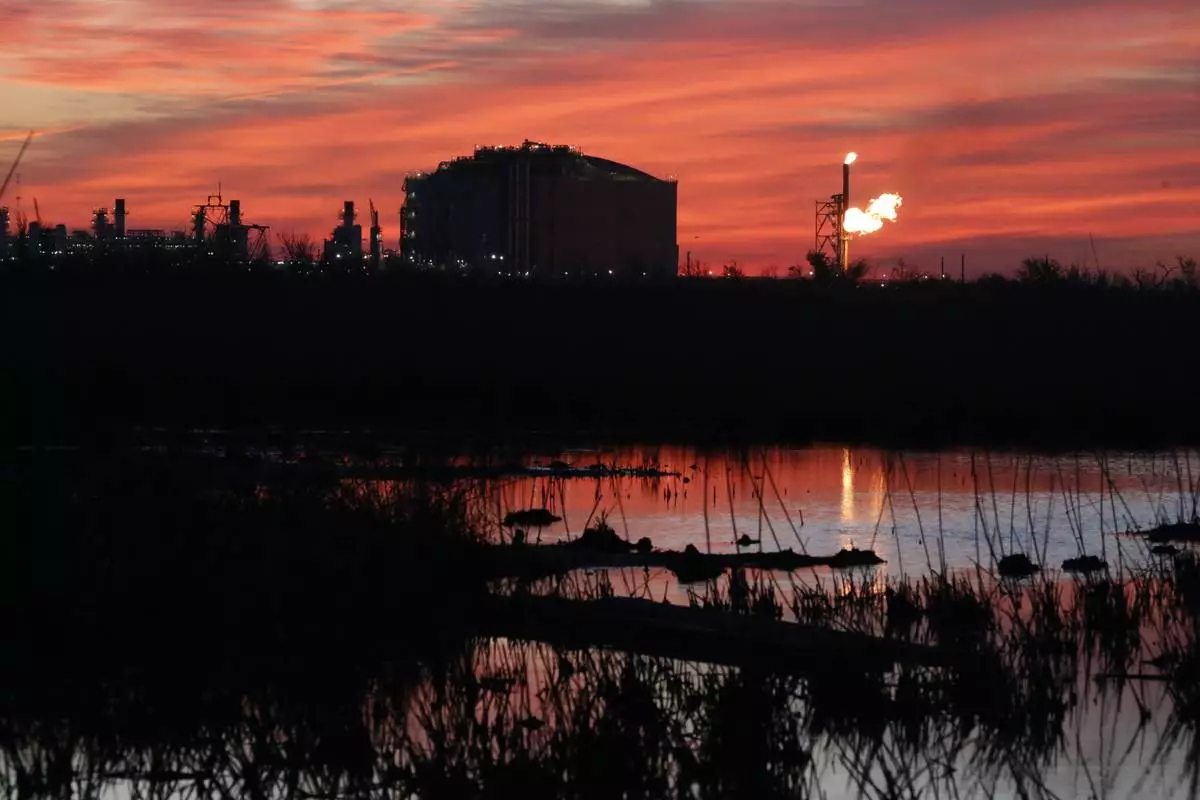
FILE - A flare burns at Venture Global LNG in Cameron, La., April 21, 2022. What would be the nation's largest export terminal for liquified natural gas won approval from a federal commission Thursday, June27, 2024 although when the southwest Louisiana project will be completed remains unclear in light of a Biden administration delay on such projects announced earlier this year. (AP Photo/Martha Irvine, File)
Violence and mass shootings often surge in the summer months, especially around the Fourth of July, historically one of the deadliest days of the year.
A flurry of shootings around the holiday a year ago left more than a dozen people dead and over 60 wounded. Just two years ago, another mass shooting at a Fourth of July parade left seven people dead near Chicago. The mother of a 10-year-old boy left paralyzed by the attack said Wednesday that her family won’t go to this year's parade, which is returning for the first time since the shooting.
"I don’t know if we’ll ever be able to attend the parade again,” said Keely Roberts, who also was wounded.
The Gun Violence Archive, which tracks mass shootings involving four or more people regardless of whether they died, shows June, July, and August have had the highest total number of mass shootings over the past decade. The lowest totals were from December through March.
Independence Day topped the list with 58 mass shootings over the last 10 years — closely followed by July 5, according to the archive.
“It’s the gathering, the free time, the drinking,” said James Alan Fox, a criminologist and professor at Northeastern University, who oversees a mass killings database maintained by The Associated Press and USA Today in partnership with the university.
In the first half of this year, there were 19 mass killings — 14 of them shootings — with at least four dead in the U.S., according to the database. In 2023, the nation recorded the highest number of mass shootings — 39 — since the tracking began.
Researchers point to a combination of factors that historically have caused the summer months to see an increase in violence and shootings.
Mass killings are far more likely to happen at a home and most often the victims are related to the shooter or are a close acquaintance.
When school is out, families are spending more time together, children are often home all day and there's a greater likelihood of more victims when everyone is under one roof, said Jesenia Pizarro, a criminology professor at Arizona State University.
Teenagers also have more idle time on their hands. “It's like the opportunity shifts in the summer,” she said.
After two mass shootings hours apart in Dayton, Ohio, left a total of three people dead and eight injured in late June, police said one of the shootings took place at a vacant house where hundreds of teens and young adults had gathered.
“It could have been a lot worse," said Eric Henderson, the city’s assistant chief, who pointed out it was the third big party since mid-June where trouble erupted after young people took over a vacant house.
Family reunions, block parties and festivals in the summertime all bring more people together — and create more opportunities for trouble, more so when there's drinking involved.
“It doesn’t mean that those kinds of things aren’t around in March or in January. They’re just around at a lower extent than they are in the summertime,” said University of Miami criminologist Alex Piquero. “We do know that just about every summer there’s an uptick in violence. So I fully anticipate that happening this summer. I fully anticipate it happening next summer and the summer after that.”
The likelihood of being a victim of a mass shooting is still extremely low, but it does mean there's the potential for more victims if something happens at a crowded event.
During the first weekend of this summer, there were several shootings where multiple people were killed or wounded at large gatherings, including in Montgomery, Alabama, where gunfire erupted during an unsanctioned street party with more than 1,000 people. Police said nine people were shot and that investigators found more than 350 spent shell casings.
Several studies have linked warm weather and hotter than normal temperatures with rising tempers — and not just in the summer. They also link the increased temps with more violent crimes, although other factors often come into play.
Former New York City police officer Jillian Snider, now a lecturer at the John Jay College of Criminal Justice, said she saw this firsthand in neighborhoods where a lack of air conditioning pushed people out onto their stoops or into parks on sweltering days.
“It makes people a little angry because there’s nowhere to cool down and tensions rise,” she said. “You have no escape from that, you're just more upset.”
Associated Press journalists Sharon Johnson in Atlanta and Sophia Tareen in Chicago contributed.
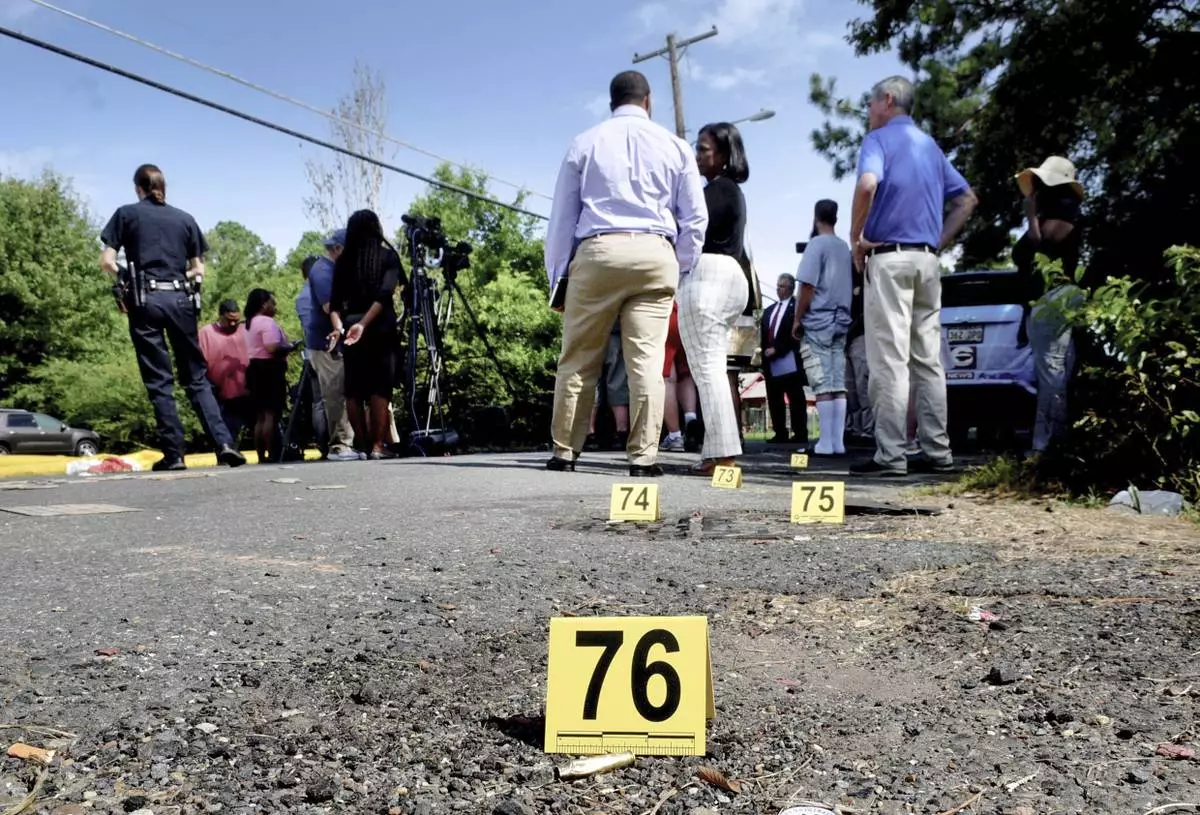
FILE - Bullet casings litter the ground behind a press conference on July 5, 2023, in Shreveport, La. At least three people were killed and 10 others wounded in the shooting. Violence and mass shootings often surge in the summer months, especially around the Fourth of July, historically one of the deadliest days each year. (Henrietta Wildsmith/The Shreveport Times via AP, File)
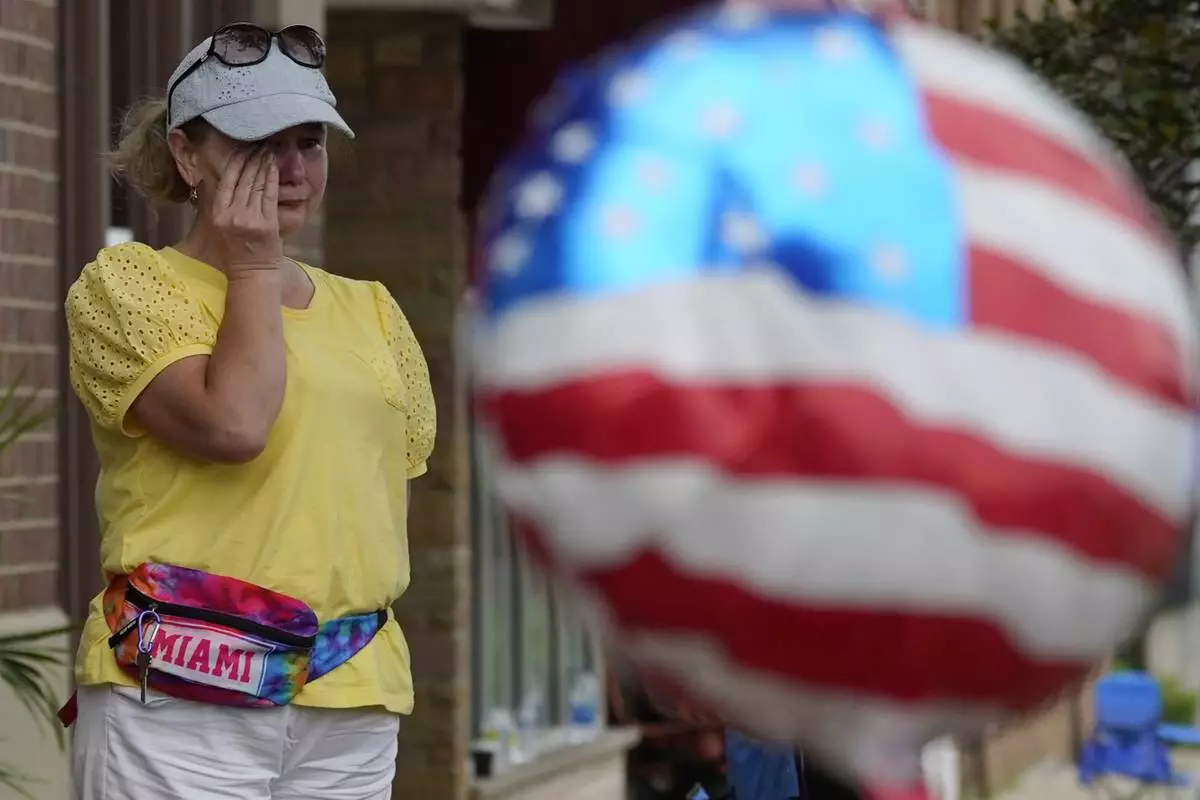
FILE - A woman wipes away tears after a mass shooting at an Independence Day parade that left seven people dead and dozens wounded, in the Chicago suburb Highland Park, July 4, 2022. Violence and mass shootings often surge in the summer months, especially around the Fourth of July, historically one of the deadliest days each year. (AP Photo/Nam Y. Huh, File)






